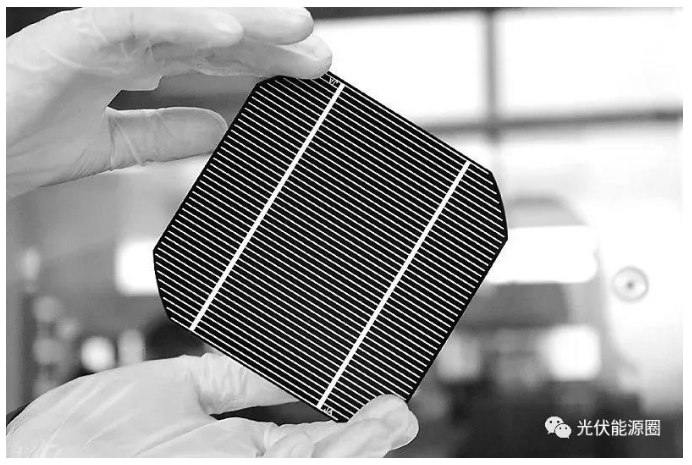China has labeled "photovoltaic power generation" as a "king bomb": not getting stuck by oil
In the matter of oil, East Asia, as the fastest growing region in the world, is also the most oil-deficient region. It has suffered too much in the past 50 years. Therefore, finding alternative energy sources has become the fundamental choice for East Asian countries. China has a vast land and resources. What are the good choices to face the U.S. oil hegemony?
That is to bypass fossil fuels and directly use clean energy to generate electricity. This is the new energy industry that is currently in full swing in China. In the field of new energy, after more than 20 years, we are finally at the forefront of the world, mainly in nuclear power, hydropower, wind power and photovoltaic power generation.
Last year, photovoltaic power generation was 142.1 billion kilowatt-hours, accounting for only 1.9%. Regardless of the fact that photovoltaic power generation does not have hydropower and wind power, it is so glorious, but it is currently the most important power generation industry in China. Because the investment in photovoltaic power generation is smaller than that of hydropower, there is no need for large-scale construction, and individual households can also be connected to the grid for power generation. The impact on the environment is less than that of wind power. There is no noise and emissions, and the safety is higher than nuclear power. What's going on with solar energy? And it comes directly from the sun, it is truly inexhaustible and inexhaustible energy.
We have always been serious about the development of photovoltaic power generation, because we are too suitable for the development of photovoltaic power generation. 76% of our country has abundant sunlight. In the northwest, most areas of Qinghai-Tibet have strong sunlight, and the land is vast and sparsely populated, which is suitable for large-scale deployment of photovoltaic power generation. factory.
The material cost has been restricting the large-scale promotion of photovoltaic power generation before. In 1969, France built the world's first solar power station. The whole of Europe, the United States, and Japan are developing photovoltaic power generation and have achieved good results. However, after half a century of development, government subsidies are still needed to promote photovoltaic power generation.
China’s photovoltaic power generation is not too late. 1967 was the first three years of the Dongfanghong satellite’s launch. Semiconductor materials and financial physicist Wang Zhanguo was appointed Dongfanghong No. 1 to develop photovoltaic cells. In the second year, 3,350 batteries were produced. . But for stability, Dongfanghong No. 1 still uses chemical batteries, but these batteries have become the pioneering work of China's photovoltaic industry.

In 1975, Ningbo and Kaifeng successively established solar cell factories. In 1998, Miao Liansheng formally established Baoding Yingli New Energy Co., Ltd., the first photovoltaic company in China. In 2001, Wuxi Suntech was formally established, and a 10 MW production line was officially put into operation the following year. In the first decade of the 21st century, the global photovoltaic industry was concentrated in Europe, so there are many good photovoltaic companies in China, but the Chinese do not know.
The former Suntech became a mess in Europe. In December 2005, Suntech went public in the United States. It was the first mainland private company to be listed on the New York Stock Exchange. In the following year, Suntech’s boss Shi Zhengrong became the richest man in China.
In 2007, the aforementioned Yingli was also listed on the New York Stock Exchange and raised US$319 million. In the same year, Jiangxi LDK 100MW silicon wafer production capacity was put into production, becoming the largest silicon wafer manufacturer in Asia. The boss, Peng Xiaofeng, has become the richest man in new energy, and his status is similar to that of today's Ningde era. Because the production of photovoltaic equipment consumes a lot of energy and pollutes, Chinese companies can eat more than European companies.
Before 2008, the cost of photovoltaics in China has been falling, but the price of national silicon wafers has been rising. Therefore, in this era, China's richest bosses and richest private companies are not doing real estate or the Internet, but photovoltaics.
But in 2008, the global financial crisis hit this industry hard, and European and American countries have no money to subsidize domestic companies to invest in photovoltaic power generation. In addition, in 2011, the United States launched a double-reverse investigation against Chinese photovoltaic companies without regard to military ethics. The Chinese photovoltaic companies that signed a long-term agreement saw their stock prices plummet and capital was tight. The aforementioned Suntech declared bankruptcy in September 2012.
Facing the darkest moment of China's photovoltaic industry, the country did not choose to stand idly by.
In 2012, the "Twelfth Five-Year Plan for the Development of Solar Power Generation" was released in time. Subsidies for kilowatt-hours, photovoltaic poverty alleviation, front-runner projects, household photovoltaics, and green certificate transactions have been established. Domestic demand and subsidies have rescued these photovoltaic companies. As of the end of 2015, including photovoltaic power plants and distributed power generation, my country's cumulative installed capacity of photovoltaic power generation is 43.18 million kilowatts, which is the world's largest installed capacity of photovoltaic power generation.
Through long-term industrial support and consumption force, China's photovoltaic power generation has now formed a scale effect. In the past ten years, the cost of photovoltaic power generation has been reduced by 90%. The current average level is no more than 0.36 yuan per degree, which is on the same level as thermal power generation. Since there is no need to continuously invest in fuel, the cost of photovoltaic power generation in the future will also drop by about 15%.
China has made a commitment to achieve a carbon peak by 2030 and achieve carbon neutrality by 2060. There are many sources of carbon emissions in a country. Human plants produce carbon dioxide, computers and washing machines also emit carbon dioxide, but the most important thing is the burning of fossil fuels. Therefore, clean power sources and electrification of power use are the core of achieving the dual-carbon goal. To this end, what we want to achieve is the entire cycle of new energy: clean power generation-UHV power transmission-terminal electrification. From power generation to transmission to electricity consumption, it must be clean, efficient and cheap, to achieve supply to stimulate consumption, and consumption to force supply.
The dual-carbon goal is environmental protection on the one hand, and on the other hand, replacing fossil fuels with new energy sources, so that China and neighboring countries can get rid of their dependence on international oil. Then the U.S. oil hegemony will become a paper tiger, and coupled with the internationalization of the renminbi, the U.S. dollar hegemony will be at stake. If the two sharp swords of the United States are no longer useful, they will surpass the United States and return to the top.
News Source: Photovoltaic Energy Circle



 Weicax
Weicax